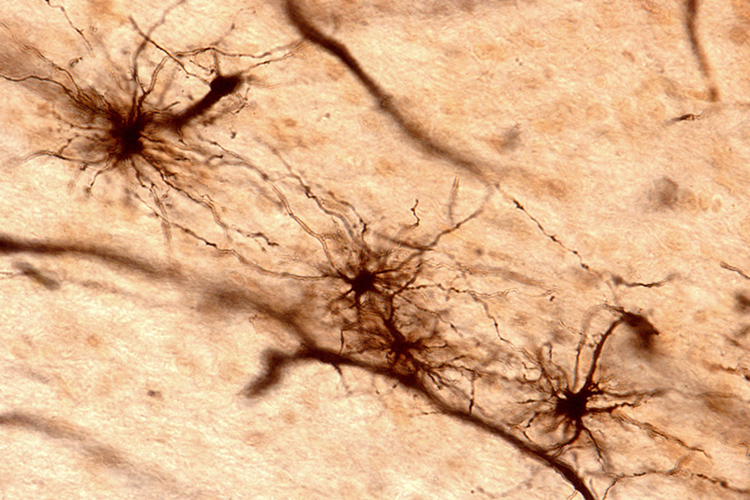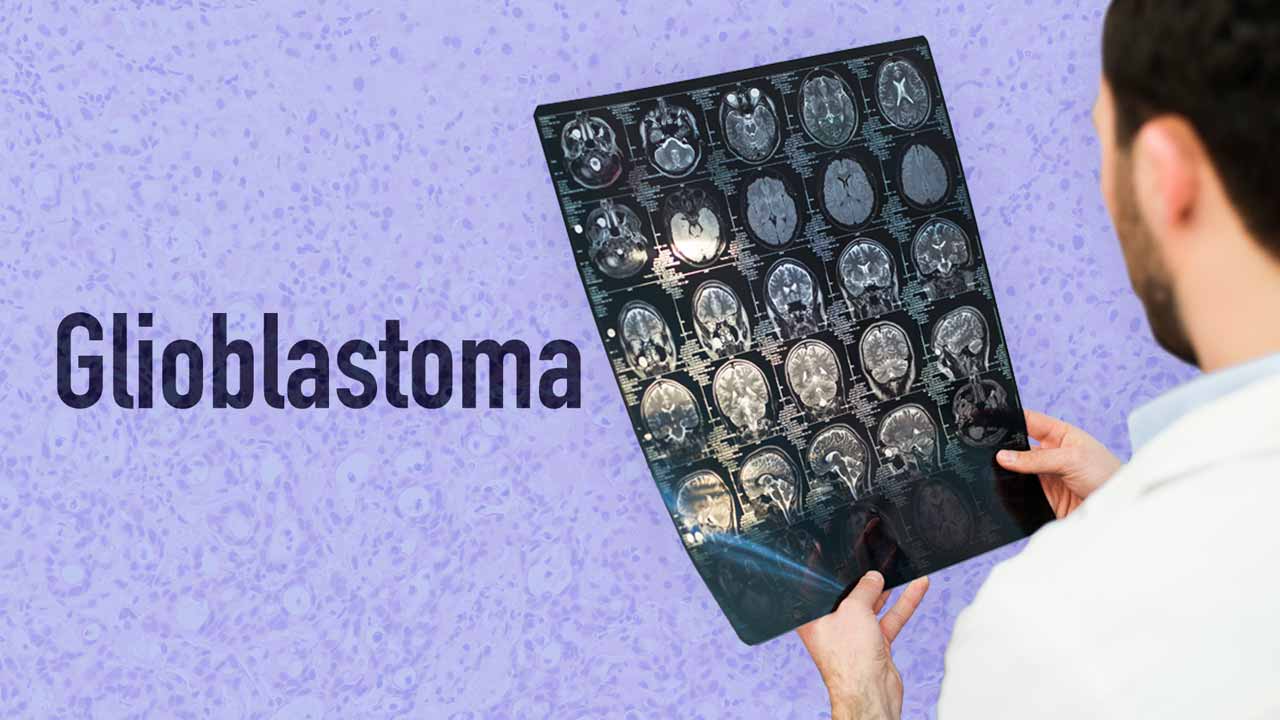Glioblastoma is the most malignant type of brain tumour (Brain Tumour Research 2023).
What is Glioblastoma?
Glioblastoma is a type of glioma tumour, meaning it originates from the glial cells that support neurons in the brain. Specifically, glioblastomas are grade IV astrocytomas that originate from the highly vascular and quickly-reproducing astrocyte cells (John Hopkins Medicine 2022). In Australia, glioblastomas account for approximately 60% of brain tumours (AIHW 2023).
Among all glial tumours, glioblastomas are the most invasive (Brain Foundation 2018). They grow quickly and often spread to nearby brain tissue. Most GBMs develop ‘de novo’, meaning they start as grade IV tumours rather than developing from a lower grade (ABTA 2022).
Glioblastomas develop in either the brain or spinal cord (Mayo Clinic 2023).
In most cases, patients will die from their tumour within 12 to 18 months of their diagnosis (Brain Tumour Research 2023). Glioblastomas are most common among those between 65 and 74 years of age and affect slightly more men than women (ABTA 2022).
The cause of glioblastoma remains relatively unknown (Mayo Clinic 2023).
Symptoms of Glioblastoma
The symptoms of glioblastoma are often caused by increased intracranial pressure, which occurs when the tumour grows too large and consequently compresses the healthy brain tissue or obstructs the flow of cerebrospinal fluid (UCSF Health 2019).
Common symptoms include:
- Headaches
- Nausea and vomiting
- Mood and personality changes
- Changes to cognitive function
- Seizures
- Speech difficulties
- Vision issues (double or blurred vision).
(Mayo Clinic 2023)
As with any type of ailment associated with the brain, symptoms may differ depending on the part of the brain affected (Mayo Clinic 2023).
How is Glioblastoma Diagnosed and Treated?

Diagnosis is most often achieved with an MRI and, if possible, a biopsy of the tumour (Mayo Clinic 2023).
Like many other malignant brain tumours, glioblastomas can be treated with surgery, radiotherapy, chemotherapy or a combination of these treatments. However, most glioblastomas are difficult to fully remove through surgery, hence why other treatments such as chemotherapy and radiotherapy are often also needed (ABTA 2022).
Prognosis for Glioblastoma
Even with optimal treatment, only 43% of patients will live for one year and 5.6% for five years. Without treatment, life expectancy is about three months (Bruce 2023).
Children and younger adults with glioblastoma generally have a longer life expectancy, with 19.4% of children and 26% of people aged 15 and 29 living for five years or more (Watson & Han 2022).
Caring for a Patient With Glioblastoma
Caring for a patient with glioblastoma requires a holistic approach. You need to not only be involved in the medical treatment of the tumour but also provide psychosocial care. The emotional and psychological impact of being diagnosed with glioblastoma is quite substantial, particularly as these patients are facing a terminal brain tumour. They may also be physically and socially impacted by the changes the tumour has caused to their lifestyle due to symptoms such as memory problems and personality alterations.
It is recommended that a treatment plan be provided that caters to all aspects of the physical, medical and psychosocial impact of the glioblastoma.
The medical treatment being provided to the patient, which may include chemotherapy, radiotherapy and medication management, will also impact the individual’s health more broadly. Any side effects from the medical management of a patient with glioblastoma must be swiftly dealt with. These may include nausea and vomiting, loss of appetite, fatigue, pain and skin abnormalities.
The patient’s family should also be involved in their treatment and, as a nurse, you will need to ensure that family members’ psychological health is maintained. This can become very difficult, especially as the tumour advances. Patients will quickly move from a fit and healthy lifestyle to one ravished by the diagnosis of a terminal brain tumour, to a discussion about palliative care.
As a nurse, you will play a pivotal role in the provision of both physical and psychosocial care throughout this period.
Test Your Knowledge
Question 1 of 3
What percentage of patients will live for one year following their diagnosis if they receive optimal treatment?
Topics
References
- American Brain Tumor Association 2022, Glioblastoma (GBM), ABTA, viewed 27 November 2023, https://www.abta.org/tumor_types/glioblastoma-gbm/
- Australian Institute of Health and Welfare 2023, Cancer Data in Australia, Australian Government, viewed 27 November 2023, https://www.aihw.gov.au/reports/cancer/cancer-data-in-australia/contents/overview-of-cancer-in-australia-2023
- Brain Foundation 2018, Brain Tumour / Cancer, Brain Foundation, viewed 27 November 2023, https://brainfoundation.org.au/disorders/brain-tumour-cancer/
- Brain Tumour Research 2023, Glioblastoma Multiforme (GBM), Brain Tumour Research, viewed 27 November 2023, https://braintumourresearch.org/en-au/blogs/types-of-brain-tumour/glioblastoma-multiforme-gbm
- Bruce, JN 2023, Glioblastoma, Medscape, viewed 28 November 2023, https://emedicine.medscape.com/article/283252-overview#a3
- Johns Hopkins Medicine 2022, Gliomas, The Johns Hopkins University, viewed 27 November 2023, https://www.hopkinsmedicine.org/health/conditions-and-diseases/gliomas
- Mayo Clinic 2023, Glioma, Mayo Clinic, viewed 28 November 2023, https://www.mayoclinic.org/diseases-conditions/glioma/symptoms-causes/syc-20350251
- UCSF Health 2019, Brain Tumour, University of California San Francisco, viewed 28 November 2023, https://www.ucsfhealth.org/conditions/brain-tumor
- Watson, S & Han, S 2022, ‘What Is Glioblastoma and What Is the Survival Rate?’, Healthline, 2 December, viewed 28 November 2023, https://www.healthline.com/health/brain-tumor/glioblastoma
 New
New 
